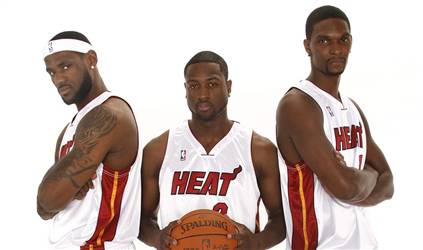Lebron, Wade and Bosh: 10 Things every Business can Learn about Teamwork from the NBA
The Miami Heat’s LeBron James, Dwyane Wade and Chris Bosh have been referred to as the “Big 3,” and NBA observers everywhere are watching this year’s playoffs carefully, preparing to pass judgment on whether it’s a match made in heaven or an utter disaster. Not since the magical pairing of Scottie Pippen and Michael Jordan…




